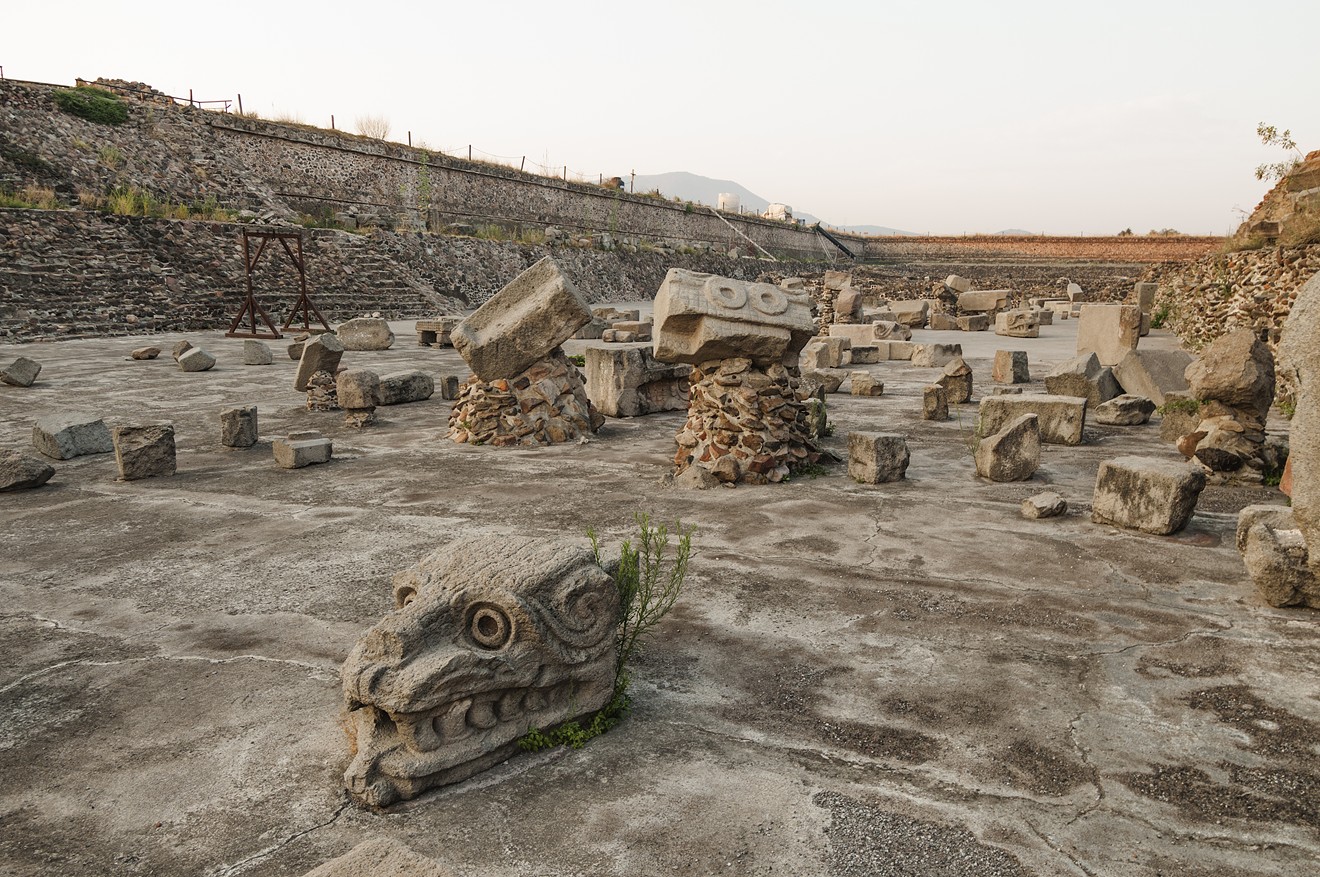Teotihuacan, which was declared a UNESCO World Heritage Site, has been excavated for the past 100 years, with many new discoveries being made in 2003. This is the first time many of the artifacts from that find have been shown publicly. Some haven't even been put on display in Mexico.
The show starts off with the newer discoveries so “people can have that same excitement that we have as archaeologists and scholars,” says Matthew Robb, chief curator at the Fowler Museum at UCLA, and former curator of the Americas at the de Young Museum in San Francisco, where the exhibition debuted. “When new things come to life, it forces you to reassess what you thought you knew about a place."
Specifically, the new finds at Teotihuacan have challenged the notion that pyramids are built for the burial of specific people. While both the Pyramid of the Sun and the Pyramid of the Moon revealed elaborate offerings, neither had a human individual at the center. This suggests that the city might not have been ruled by a single, paramount individual, like a king or emperor, despite its sophisticated design and planning.
“It’s an interesting model to think about – an ancient civilization that was based more on cooperation rather than individual domination,” Robb says.
Since no one person was found, the curators believe that the pyramids might have been dedicated to military power. Certain pieces of jewelry found within, for example, were carved to look like human teeth.
From start to finish, the exhibit displays artifacts from Teotihuacan that give insight into the multicultural society, which flourished long before Europeans ever arrived. Many of the sculptures are made of greenstone and were likely sacrificial offerings. According to Robb, these sculptures were found in all walks of life, from working class to royalty.

This sculpture is one of the central pieces of the exhibit, which showcases the way of life for people in this early city.
Courtesy of Phoenix Art Museum
“One of the things that I want people to understand is that common heritage that we all have, as well as these individual expressions of that heritage,” he says. “Teotihuacan is a very special city in that regard.”
Gilbert Vicario, Selig Family Chief Curator at Phoenix Art Museum, first visited the ruined city when he was 13. He saw artifacts from Teotihuacan at the de Young Museum in San Francisco back in 1993, when he was starting his curatorial career. This new round of exhibitions are the first shows since then. For Vicario, it’s been a dream of his to bring it to Arizona.
“Luckily, I think it was unanimously positive,” he says. “Everybody seemed to feel very good about it coming to Arizona. It seemed to be the perfect exhibition and really a once-in-a-lifetime exhibition to present to audiences in Phoenix, and really Arizona statewide.”
Since it’s impossible for many Mexican-Americans to actually go to Teotihuacan, Vicario feels it’s important to give people the opportunity to be connected with their culture and come closer to their own humanity as it connects to Latin America.
“It really creates a different understanding of the extent of those connections and those relationships,” he says. “I think that was really one of the reasons why we felt it was important to present that here, because it does link to a common heritage that’s really inscribed in the archaeology and the landscape and that heritage connects Arizona to Mexico.”

This pair of human figures can be seen at the beginning of the exhibition.
Courtesy of Phoenix Art Museum
The exhibit in the de Young museum isn’t exactly the same, but both curators were excited for people to see the one at Phoenix Art Museum. Robb emphasizes that the exhibit is an intensely collaborative effort but he also appreciates the differences between the showings.
“It’s sort of like a mixtape,” Robb says. “You’re using the same songs with a different order.”
"Teotihuacan: City of Water, City of Fire." On view until January 27 at Phoenix Art Museum, 1625 North Central Avenue; 602-457-5814; phxart.org. Hours and ticket costs vary by day, general admission is $23 for adults and $14 for children ages 6 to 17; see phxart.org for complete information.
Correction: an earlier version of this article referred to one of the pyramids at Teotihuacan by a different name. It is the Pyramid of the Feathered Serpent, not the Pyramid of the Serpent.











